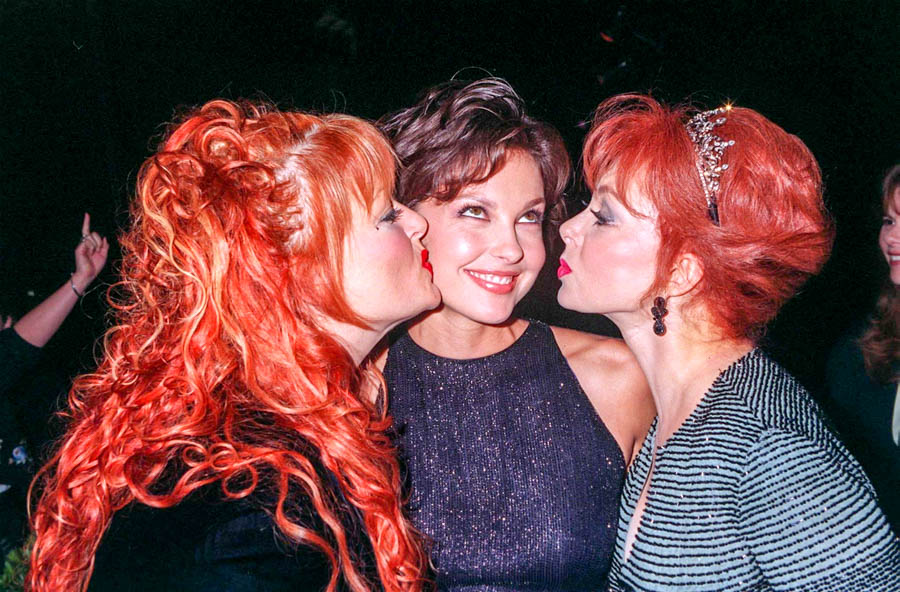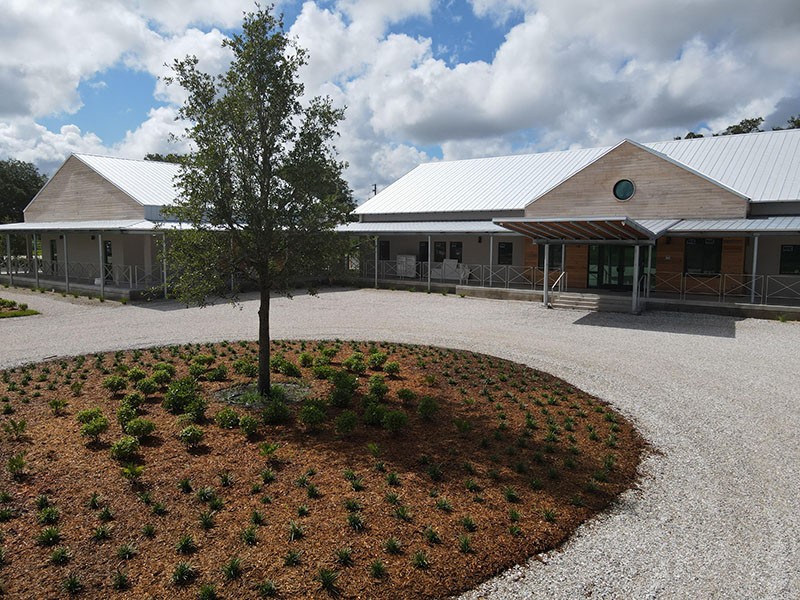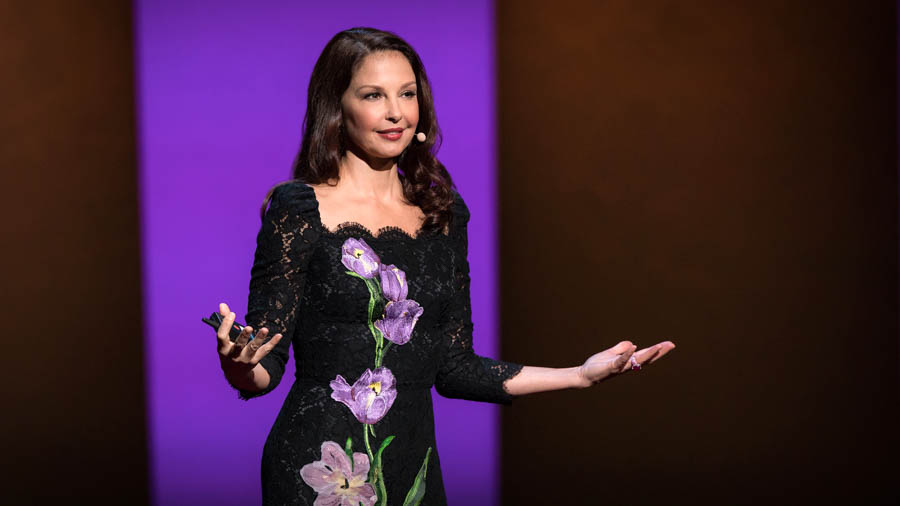For those recovering from trauma, healing doesn’t always come easily. The journey to recovery isn’t a linear process, there’s no cast to put on internal pain, no wound to stitch up, no antibiotic to ward off infection. Instead there’s just honesty, surrender, and the taking of the first of many steps towards a long road to recovery. Resilient Retreat, the non-profit organization built on 84 acres of conservation land in Sarasota, is dedicated to helping those impacted by trauma and abuse take the first steps in their healing journeys. The organization, which broke ground on its retreat center in 2020, uses evidenced based programs to take a data-driven approach to help those around the community, from everyday civilians to first responders. Resilient Retreat held its grand opening luncheon this past November, featuring their keynote speaker, actress Ashley Judd. With an acting career that has spanned three decades, Judd is an outspoken advocate for gender equality, mental health, and women’s rights and has been increasingly active in humanitarian work around the world. Since 2004, Judd has traveled to 22 countries, sharing with others her experiences and mental health journey.
What drew you to speaking at the Resilient Retreat Grand Opening? ASHLEY JUDD:When I was told about what they hoped to do in terms of helping folks heal their trauma and lowering the financial barrier to getting help resolving trauma, that was certainly something that was important to me. I’m someone who has personally experienced trauma from a young age and then had multiple iterations of trauma and exposure to it throughout my life. And so, sharing about my experiences is an integrated part of my healing journey. And whenever I have the opportunity to deepen my own resilience as well as share a message of hope and recovery with others, that’s important to me. What I intend to do is share my experience, of the strength and hope I’ve found in my journey recovering from unresolved grief and cause of trauma to share what that’s looked like for me. How with a lot of support from people who have walked a path before me, I’ve gone from hurting to healing to helping. I went to treatment myself in 2006 for unresolved childhood grief and trauma, and I attended an extraordinary treatment center called Shades of Hope in Texas. They are trauma-informed, meaning they have evidence-based care that acknowledges some things help for trauma and some things do not. And not all treatment centers in the country are trauma-informed. Resilient Retreat is following that same model that understands that evidence and data inform proven ways of resolving trauma.
It’s interesting that sharing your experiences with others is still important to your own healing.? JUDD:Yes, because trauma isolates us. It isolates us, first of all, from the self, from the core of the self, but also from the community. We can’t heal alone, it has to be done in fellowship, which is part of what Resilient Retreat offers, to be able to heal in a community. Trauma that we don’t transform becomes trauma that we will transfer – it lives in the cells of our bodies and will manifest itself in all of our relationships.

How does trauma isolate us? JUDD: It seeps into our emotional being. It affects how we sleep, but it’s how we play or don’t play back certain events in our heads years later. When trauma or memories are not stored properly in our brain, they manifest themselves into any number or type of interactions that we have. And there are ways to take those memories and events and have resolution and to desensitize them. A traumatized brain also functions very differently from a fully operating brain. The language center, the Broca center, goes completely offline when the traumatized brain is invoked. And we become nonverbal, we secrete stress hormones in massive amounts. We go into fight, flight, or freeze. We can’t access the fullness of our human skills and become much more limited in our capacities. What’s important is that there are ways to take those memories and events and find resolution to and desensitize them.
What are some of the ways you can do that? JUDD: Well, the approach is threefold. First of all, we do have to get our story straight. There has to be some talking involved. There needs to be understanding of what happened. So then we have a sort of purgative experience of where the trauma lives somatically– as some people say, the issues are in the tissues–where it lives in the cells and the musculature of the body. It needs to come out. And the way in which the act was unresolved within us, we need to be able to resolve it. So that might be through a variety of healing arts. It might be through running or drumming or movement or dance or yoga. The body keeps score and everyone can find their own way, either through a professional modality or intuitively because our bodies want to heal. They want homeostasis. There are certain medications in the hands of a responsible doctor that can be supportive for a period of time.
What are some of the healing arts that worked for you? JUDD: So at times I’ve had a really beautiful yoga practice and that has included restorative postures where just lying on the ground with some pillows or bolsters has allowed my body to be in a supported nurturing posture where sensation has moved through my body and allowed me to feel release. Massage has been very important to me, and they get their anonymity, so I won’t say who it is, but one of my family members has had a couple of massages recently and they’ve released a lot of grief toward the end of their massages as well. Every time that I do EMDR (Eye Movement Desensitization and Reprocessing), I have body work afterwards because I want to continue to move the grief and the trauma out of my system after I’ve desensitized really intense memories. And then also there’s something called experiential work, which allows people to, if they were assaulted, which one in three women experience male sexual violence, to fight back and complete their act of defending their body.

In addition to a program of recovery that I follow – which includes EDMR, periodic intensive trauma work, and other evidence-based, data-informed practices – I have a daily practice as well. The first thing that I do is start my day with reading some grounding texts that, to me, are spiritual and express my highest values and ideals. This really helps settle and soothe my parasympathetic nervous system, which is the part that regulates the break so I don’t wake up agitated and flighty, and can easily get activated by looking at my phone or thinking about the day, which can result in me descending into spin mode.
So I read something that’s really calming, and grounding, and centered. I also journal so that I can just get everything out that’s going on inside and put it on paper. I write with my non-dominant hand, which is a really well known evidence based practice. And then I have a meditation practice that really works for me. I’ve memorized some beautiful prayers from the world’s great spiritual traditions. I slowly go through the words of those prayers, which slows down my thinking. It slows down the heart rate, it slows down the breathing and really, we become that on which we concentrate. I have different ways in which I pray, seeking only knowledge of my higher powers and opening my heart to their will.
And I imagine that this routine would have to be consistent? JUDD: Yes. I’m very consistent with my morning practice. It is non-negotiable. Self care isn’t selfish. It is self-esteem.
How can the general public work to eradicate any preconceived notions or stigmas that are attached to mental illnesses and different types of trauma? JUDD: The number one thing, of course, is simply to normalize talking about mental health and to make it normative. Because for example, depression is the number one public health morbidity in this country. It is the number one cause of public disability in the world. And so, it is a tremendous contradiction if depression is kept a secret–that simply hobbles us in treating it.

What advice would you have for people who are on the fence about starting the treatment process for their trauma? What’s often the hardest part about starting this journey? JUDD: I would say to go ahead and do it now and think about it after. The only thing you have to lose is your pain. I think that surrendering is the hardest part of the process. Having the vulnerability to surrender and to trust those of us who have stepped through that portal. To know it’s really safe to surrender.
Can you SHARE the humanitarian work that you’ve been involved with? JUDD: I have been partnered with grassroots organizations since 2004 and I’ve been to 22 countries around the world, visiting predominantly girls and women and their children in places like refugee camps and brothels, orphanages and hospices. The root causes of their trauma and suffering have been gender inequality and male sexual violence. We’ve been in community together, they’ve been interested in my stories of trauma and grief. And together we have found refuge and compassion and empathy and a lot of identification even though some of the details of our situations differed.
And what has that meant for you in your life? JUDD: It’s difficult to overstate how ravishing it has been for me, both in the sense of the devastation and how generative it has been. It has bonded me to my fellows. It has impassioned me to give, it has taught me the hill on which I’m willing to die. It’s shown me what I won’t put up with. It’s given me a sense of profound purpose.









